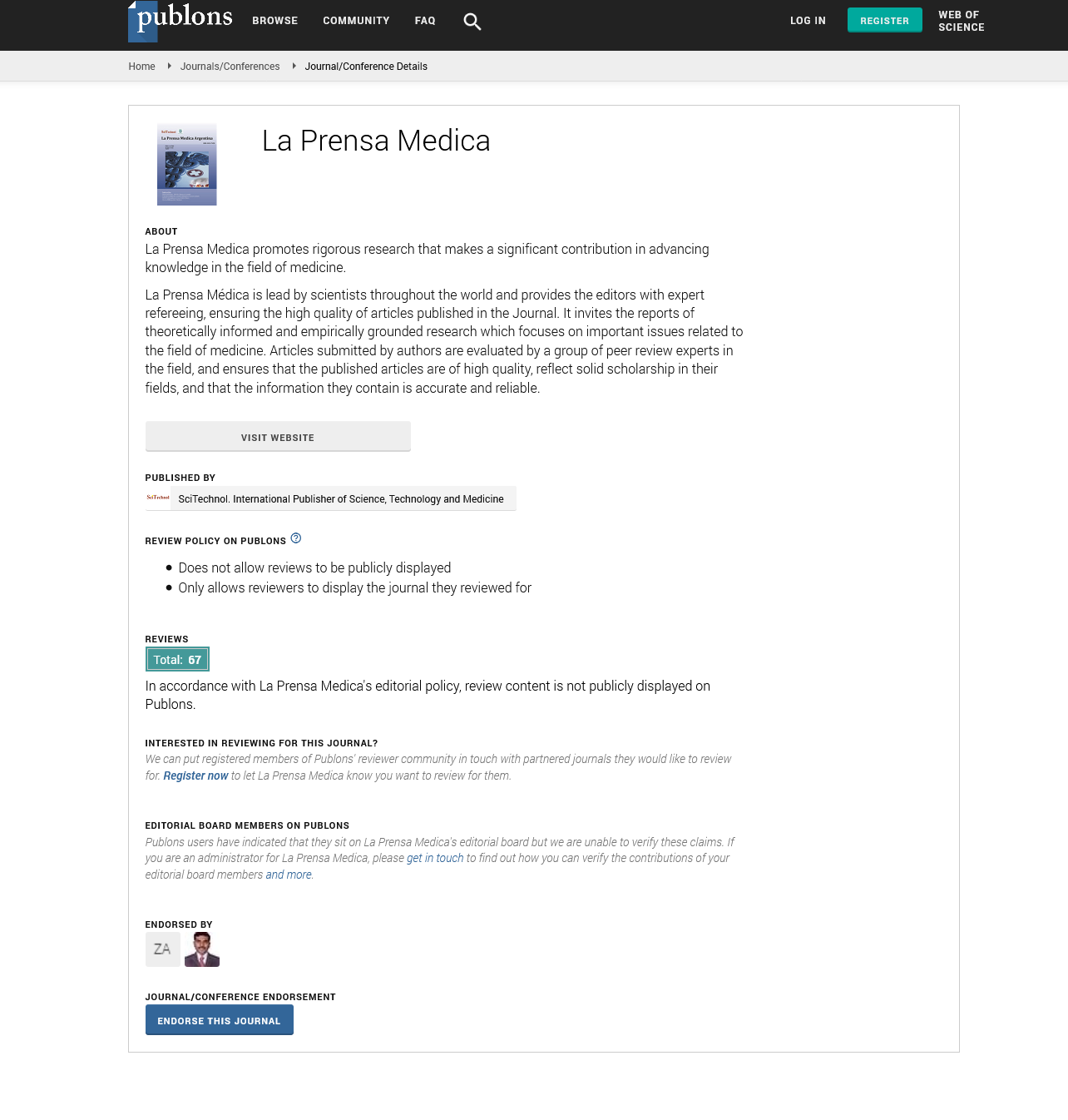Perspective, La Prensa Medica Vol: 109 Issue: 1
Emerging Strategies for the Management of Atropine Poisoning
Jeby Eddleston*
1Department of Anesthesiology and Critical Care Medicine, The Children’s Hospital of Philadelphia, Philadelphia, USA
*Corresponding Author: Jeby Eddleston
Department of Anesthesiology and
Critical Care Medicine, The Children’s Hospital of Philadelphia, Philadelphia, USA
E-mail: eddleston5982@hotmail.com
Received date: 28 March, 2023, Manuscript No. LPMA-23-100496;
Editor assigned date: 31 March, 2023, PreQC No. LPMA-23-100496 (PQ);
Reviewed date: 14 April, 2023, QC No. LPMA-23-100496;
Revised date: 21 April, 2023, Manuscript No. LPMA-23-100496 (R);
Published date: 28 April, 2023, DOI: 10.4172/0032-745X.1000151
Citation: Eddleston J (2023) Emerging Strategies for the Management of Atropine Poisoning. La Prensa Medica 109:1.
Description
Atropine is a medication that is frequently used in the medical field to treat bradycardia, dilate pupils, and manage certain poisonings. However, as with any other medication, atropine poisoning can occur when it is administered incorrectly or in excess. Lately, there have been huge progressions in the systems for overseeing atropine harming. The new treatments for atropine poisoning that are the subject of this will be examined.
Atropine poisoning management relies heavily on prompt medical attention and early detection. Antidotes can significantly improve patient outcomes if administered promptly. One arising methodology includes the utilization of physostigmine, a reversible acetylcholinesterase inhibitor. Physostigmine really balances the anticholinergic impacts of atropine by expanding the degrees of acetylcholine in the body. It has been discovered to be especially helpful in severe cases of atropine poisoning, when conventional treatments may not be as effective.
Pralidoxime and other cholinesterase reactivators are being used in a new approach. These reactivators work by restricting to the organophosphate intensifies present in atropine and reactivating the hindered cholinesterase compounds. The toxic effects of atropine can be reduced by restoring normal cholinesterase activity. This system has shown guarantee in upgrading the adequacy of standard treatment conventions and working on persistent results.
Besides, progressions in steady consideration play had a significant impact in the administration of atropine harming. Atropine toxicity frequently causes a variety of symptoms, such as tachycardia, dry mouth, blurred vision, and altered mental state. In order to keep hydration, electrolyte balance, and cardiac function in check, intravenous fluid administration and the use of cardiac monitoring devices are now common place. Additionally, in severe cases of atropine poisoning, the administration of benzodiazepines can assist in the management of agitation and seizures.
As of late, analysts have additionally investigated the capability of novel remedies for atropine harming. Monoclonal antibodies that are made to neutralize atropine's toxic effects are one such emerging strategy. By binding to atropine molecules, these antibodies prevent the parasympathetic nervous system from being affected by muscarinic receptors. While still in the trial organizes, this approach shows guarantee in giving a designated and compelling treatment choice for atropine harming.In addition, cutting-edge diagnostic tools for atropine poisoning have been developed as a result of technological advancements. Quick reason behind care testing gadgets have been intended to recognize atropine levels in the blood or pee tests of harmed people. With the help of these tools, medical professionals are able to quickly determine the degree of poisoning, adjust treatment plans accordingly, and monitor the efficacy of administering antidotes. The incorporation of such demonstrative apparatuses into clinical practice can possibly fundamentally work on tolerant consideration and results.
On the whole, arising systems for the administration of atropine harming have achieved energizing improvements as of late. Healthcare professionals now have a wider range of options for effectively treating atropine poisoning, including the use of physostigmine and cholinesterase reactivators, novel antidotes, and advanced diagnostic tools. Nonetheless, it is fundamental for note that these arising systems ought to be utilized under the direction of prepared clinical experts and as per laid out treatment conventions. Proceeded with exploration and cooperation among clinicians and researchers will additionally upgrade how this might interpret atropine harming and work on tolerant results from here on out.
 Spanish
Spanish  Chinese
Chinese  Russian
Russian  German
German  French
French  Japanese
Japanese  Portuguese
Portuguese  Hindi
Hindi 

